Flagging In Trees – What Causes Tree Branch Flagging


Tree branch flagging is not a pretty sight. What is branch flagging? It’s a condition when tree branches scattered throughout the tree’s crown turn brown and die. Various pests can cause flagging. If you want more information about tree branch flagging, including different causes of flagging damage to trees, read on.
What is Branch Flagging?
The condition called tree branch flagging occurs when a tree’s branches turn brown, wilt, or die. Usually, the branches are not all grouped together. Rather, you may see them scattered around the tree’s crown. Flagging in trees can be due to cicada insects. The females use a sharp appendage on their abdomens to break open the bark of small, new tree branches to deposit eggs. The damaged young branches can then break off in the wind and fall to the ground. Although cicada-caused flagging in trees can drop large amounts of tree litter in your backyard, the tree branch flagging won’t kill vigorous specimens. Healthy branches will recover and keep on growing. If you want to treat cicada-caused flagging damage to trees, prune out the affected branches. Do this when the tree is dormant and burn the detritus.
Flagging Damage to Trees from Other Causes
Cicadas are not the only causes of tree branch flagging. Flagging in trees, like oaks, can also result from Kermes scales, sap-feeding insects that damage many kinds of oak. Tan or brown, these scale bugs look like small globes attached to twigs. Treat with appropriate insecticides. Flagging damage to trees can also be caused by twig girdlers and twig pruners. These are both types of beetles that attack oak, hickory, and other hardwood trees. You can limit flagging damage to trees from these beetles by raking up all fallen twigs and branches and burning them. Another cause of flagging in trees is botryosphaeria canker, caused by a fungus. Botryosphaeria canker generally affects oak twigs, bending the leaves inward toward the twig. Usually, the leaves stay on the twig, but they turn brown. This cause of flagging in trees is not serious and requires no treatment. Thousand cankers disease is another invasive pest that damages black walnut. This is a more serious condition and may require special treatment. Take a sample of the flagging to your garden store and ask them for suggestions.
Gardening tips, videos, info and more delivered right to your inbox!
Sign up for the Gardening Know How newsletter today and receive a free download of our most popular eBook "How to Grow Delicious Tomatoes."

Teo Spengler has been gardening for 30 years. She is a docent at the San Francisco Botanical Garden. Her passion is trees, 250 of which she has planted on her land in France.
-
 10 Best Apartment Plants To Turn Your Small Space Into An Oasis
10 Best Apartment Plants To Turn Your Small Space Into An OasisThe best apartment plants can lend an ambience of the tropics, brighten up a space, or add a touch of drama, and turn an apartment into a relaxing oasis.
By Amy Grant
-
 Grow a Bathroom Oasis: 8 Best Bathroom Plants With No Light or Low Light
Grow a Bathroom Oasis: 8 Best Bathroom Plants With No Light or Low LightSome apartment dwellers grow the best bathroom plants with no light or low light. Read how one of our favorite plant lovers does it in the big city.
By Teo Spengler
-
 Best Trees For Carbon Sequestration And Climate Change
Best Trees For Carbon Sequestration And Climate ChangeLet’s keep planting trees. They are our best bet for capturing carbon and may help with our global warming issues.
By Teo Spengler
-
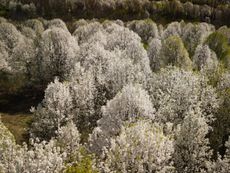 6 Invasive Trees You Should Never Plant In Your Yard
6 Invasive Trees You Should Never Plant In Your YardWhat are some invasive trees you should never plant in your yard? Click here to find out.
By Teo Spengler
-
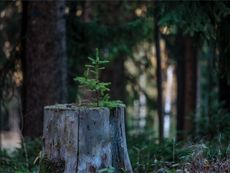 How Close Can You Plant A Tree To A Stump?
How Close Can You Plant A Tree To A Stump?Looking to plant new trees near old stumps or where stumps have been removed? Click here to learn how.
By Teo Spengler
-
 Messiest Trees That Drop Debris Everywhere
Messiest Trees That Drop Debris EverywhereWant to know which trees will create the biggest messes in your home landscape? Click here to find out.
By Amy Grant
-
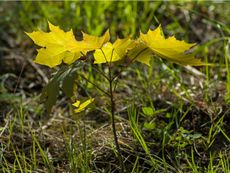 How To Get Rid Of Tree Sprouts In The Yard From Nearby Trees
How To Get Rid Of Tree Sprouts In The Yard From Nearby TreesLearn the simple way to keep pesky tree seedlings in your lawn from becoming saplings.
By Teo Spengler
-
 7 Common Tree Care Mistakes That Kill Trees
7 Common Tree Care Mistakes That Kill TreesAre you accidentally killing your tree? It's easier than you think, if you're committing one of these common mistakes. Click here for more.
By Teo Spengler
-
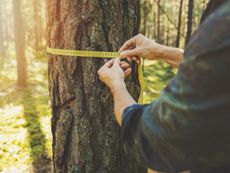 How To Tell How Old A Tree Is
How To Tell How Old A Tree IsEver wondered how to calculate the age of a tree? Click here to learn all about it.
By Teo Spengler
-
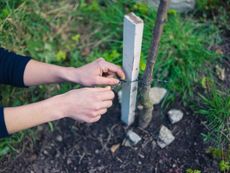 When To Remove Tree Stakes From Saplings
When To Remove Tree Stakes From SaplingsA newly planted tree may grow strong when it’s staked, but don’t forget to remove the stakes when it’s stable.
By Teo Spengler